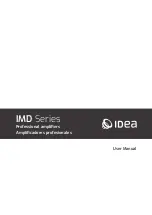
43
Remote Control of the K3
With appropriate software, any computer with an
RS232 port (or a USB-to-RS232 adapter) can be
used to control the K3. Connections needed for
RS232 communications are covered on pg. 18.
Third-party logging and contesting software is
available for various computers and operating
systems. Most applications written for the K2
should work with the K3, and some provide K3-
specific features.
For a list of K3-compatible software applications,
including configuration requirements, please visit
www.elecraft.com/K3/k3_software.htm
Remote-Control Commands
The K3 has a rich set of remote-control commands,
including many commands that directly controlthe
two DSPs. With appropriate software, various
extensions to DSP functionality can be made
available to the operator, including customized
filters, fine control over noise reduction, per-mode
parametric EQ, absolute level metering in dB, and
unique tuning aids.
K3 remote-control commands use ordinary ASCII
text, so they can be easily tested using a terminal
emulator
.
For
e
xa
mpl
e,
t
he
comma
nd
“
FA;
”
r
e
t
ur
ns
the current VFO A frequency. Using the same
command, you can
set
the VFO A frequency, e.g.
“
FA00007040000;
”
s
et
s
t
he
VFO
t
o
7.
040
MHz.
Many new commands are provided in addition to
the core set of commands supported by the K2.
Some existing commands have been updated to
di
r
ect
l
y
cont
r
ol
t
he
s
ub
r
ecei
ver
(
e.
g.
,
“
AG$;
”,
which controls sub AF gain). Please refer to the
K3
Pr
ogr
ammer
’
s
Ref
er
ence
for further details.
Panadapter/Spectrum Scope Control
The
K3’
s
“
FI;
”
r
e
mot
e
-control command can be
used from a panadapter (also known as a spectrum
scope) to determine the exact frequ
ency
of
t
he
K3’
s
first I.F. T his can automatically compensate for
crystal filter offsets, passband shift, etc.
Remote Power On/Off
A remote-control system can pull the POWER ON
line to ground (ACC connector, pg. 18) to turn the
K3
O N
. To turn it
O FF
, the controller must send
t
he
K3
a
“
PS0;
”
r
emot
e
-control command via the
RS232 interface, then deactivate the POWER ON
signal. T his sequence ensures that nonvolatile
memory is updated correctly before shut-down.
Automatic Antenna Control
Some antenna control units (e.g., those used with
St
eppI
R™
ant
e
nnas
)
can
t
r
ac
k
t
he
K3’
s
ba
nd
and
f
r
equency
by
wat
chi
ng
f
or
“
IF;
”
(
r
i
g
i
nf
or
ma
t
i
on)
packets from the transceiver. Some computer
logging/contesting applications set up the K3 to
output these messages periodically, allowing the
ant
enna
c
ont
r
ol
uni
t
t
o
“ea
ves
dr
op.
”
I
f
you’
r
e
not
us
i
ng
s
uch
s
of
t
war
e,
or
i
f
you’
r
e
not
using a computer at all, you can still set up the K3
t
o
ou
t
pu
t
“
IF;
”
pac
ke
t
s
per
i
odi
cal
l
y
by
s
e
t
t
i
ng
CONFIG:AUTOINF
to
AUTO 1
. T he packets are
sent once per second while the VFO frequency is
being changed, as well as on any band change.
I
f
you’
r
e
us
i
ng
l
oggi
ng/
cont
est
i
ng
sof
t
war
e,
che ck with the manufacture r before setting
AUTOINF
to
AUTO 1
. Some applications may
not
be
t
ol
er
ant
of
unsol
i
c
i
t
ed
“I
F;
”
pac
ket
s.
CW/DATA Terminal Applications
The K3 directly supports CW/PSK31/RTT Y ASCII
text transmit and receive via its RS232 port. Our
K3
Utility
application includes a simple Terminal
function that lets you try out these modes using
your
c
omput
e
r
’
s
ke
yboar
d
and monitor.
You can also use a generic terminal program of any
type to emulate this same functionality. Here are the
low-
l
evel
comma
nds
you’
l
l
need:
Re ceive :
I
f
a
“
TT1;
”
(
t
ext
-to-terminal) command is
sent to the K3, it will route received and decoded
CW/DAT A text to the a terminal program, in
addi
t
i
on
t
o
s
howi
ng
t
he
t
ext
on
t
he
K3’
s
VFO B
display.
Transmit:
Text
can
be
t
r
ans
mi
t
t
ed
us
i
ng
“ke
yi
ng”
packe
t
s
(
e.
g.
,
“
KY {text};
”)
.
Up
t
o
24
c
har
ac
t
e
r
s
can be sent in each packet.
Содержание K3
Страница 71: ...71 K3 Block Diagram ...
















































